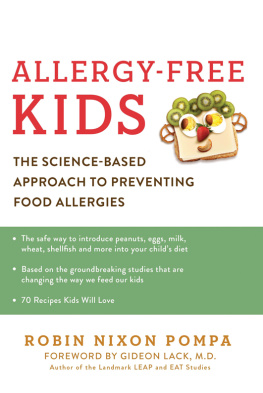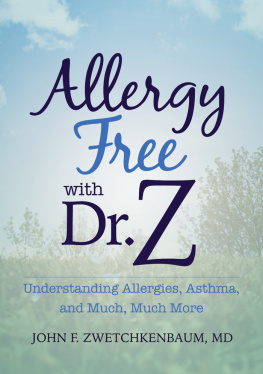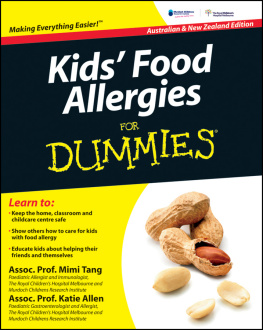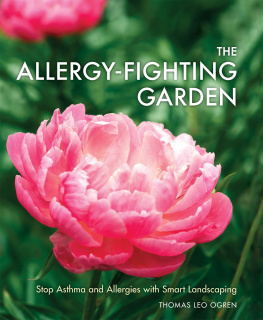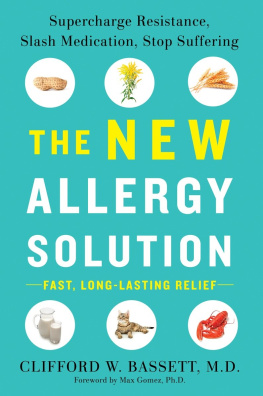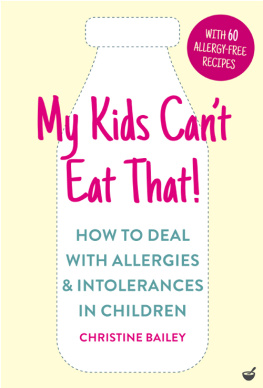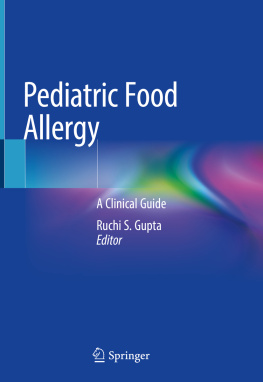My immediate reaction to this book was that it would help my patients implement some of the clinical messages that have come out of my research.
For more than a decade now, my colleagues and I have been investigating the rise in food allergies, and we came to the conclusion that there was insufficient evidence to support delayed weaning of allergenic (allergy-causing) foods in young babies. We had always been taught that infants immune systems needed time to mature before being challenged with potentially dangerous food allergens that could eventually lead to allergic reactions. The logic seemed sound, but there was insufficient evidence to back this up. Guidelines issued in the United States in 2000 recommended avoiding the introduction of nuts, eggs, and other major allergens until late toddlerhood, and similar guidelines in the United Kingdom suggested that peanut ought to be avoided in young infants diets. Nevertheless, over more than a decade and a half of avoidance, the rate of food allergy continued to rise. There were, however, some notable exceptions to this.
For example, my colleagues and I heard from Israeli pediatricians and allergists that they saw almost no peanut allergy in their population. Israeli mothers told us that peanut was one of the first weaning foods in infants diets, often as early as four months of age. We investigated this, comparing the rates of peanut allergy in Israeli children and UK Jewish children who shared a similar ancestral background. Infants in Israel were fed considerable quantities of peanut from the age of four months, whereas in the United Kingdom infants avoided peanut in the first year of life. We found the rate of peanut allergy in UK schoolchildren was ten times higher than in their Israel counterparts.
We started to wonder whether the problem of increasing food allergies was caused in part by our attempts at prevention. On this basis we conducted the LEAP (Learning Early About Peanut) study, which was an interventional investigation looking at 640 babies randomized to either early consumption of peanut or avoidance of peanut in the first year of life. The study was conducted in children at high risk of peanut allergy (determined by the existence of a past history of eczema or egg allergy). The LEAP study showed that early consumption of peanut reduced the prevalence of peanut allergy by 80 percent. More recently, the LEAP-On study has shown that the effects are persistent, even once the children stopped consuming peanut regularly.
Moreover, the EAT (Enquiring About Tolerance) study, which investigated more than thirteen hundred children, showed that the introduction of wheat, dairy, egg, peanut, fish, and sesame from three months of age in normal, previously exclusively breast-fed infants, was associated with a two-thirds reduction in the rate of food allergies. The study findings were not as clear and dramatic as in LEAP. This reduction was seen only in the children who actually consumed those foods regularly at a young age and followed the study protocol. While one of the difficulties in the EAT study was successfully introducing multiple food allergens into infants diets at a young age (many parents in the study were concerned about exposing their children to new foods, especially potentially allergy-causing ones), the EAT study nonetheless points the way toward the possibility of preventing all food allergies through early consumption of food. This study still needs to be replicated and strategies for early weaning developed, but Robins book is an inspired and creative attempt to overcome some of these early weaning difficulties.
There now seems to be general consensus that early consumption of peanut in infants in the first year of life is recommended particularly for children at risk of developing allergies who have a family history of allergy or who have eczema themselves. While the question of whether eating multiple food allergens early in life will prevent all food allergies remains open to further confirmation, the balance of evidence is swinging toward early introduction of common food allergens (egg, wheat, peanut, fish, milk, sesame). Nevertheless, there is a lingering fear in the general medical and pediatric communities and among parents about introducing food allergens at an early age in children. While there is no doubt that babies who develop severe eczema in the first year of life may already have food allergies and require specialist advice before certain foods are introduced into their diets, there is no reason for other infants to avoid these foods beyond six months of age.
Robin is familiar with this fear. I remember meeting her more than five years ago when her then infant daughter first became my patient. She balked when I told her to give baby Clara eggs and nuts. And she was not going to leave my office until she understood the science behind my advice! I think shed be the first to tell you that if I hadnt taken the time that day to help assuage her concerns, she might not have complied with my instructions. And Clara would likely still be suffering from life-threatening nut allergies.
Which is why I am so grateful that Robin, here, has taken the time to explain the science behind the new understanding of food allergies. As a reputable science writer and a former PhD candidate with a science degree from Columbia University, not to mention a mother of three, Robin analyzes the most recent studies and presents their findings in a way that all parents will be able to grasp.
Currently diet and nutrition books advising parents on how to wean infants adopt a very bland approach with emphasis on slow and delayed introduction of foods focusing initially on baby rice and pureed fruits and vegetables. Robin offers something far more exciting. She is passionate about introducing infants to healthful and delicious foods, especially potentially allergenic foods, based in large part on her own experience as a mother and also based on her understanding of recent research as a medical journalist. There is a gap in our knowledge about how to satisfy the palates of our infants and get them to enjoy a diverse and healthful diet, and Robins book bridges that divide.
GIDEON LACK, MD,
Professor of Paediatric Allergy, Kings College London; Head of Clinical Academic Paediatric Allergy Service
for Guys & St. Thomas NHS Foundation Trust,
St. Thomas Hospital, London
Around lunchtime one spring day, I sat Arthur, ten months old and my third child, in the grass outside my middle childs nursery school. Just four months earlier, Arthur would cry, sweat, and break out in hives whenever he touched cooked eggs. But I kept giving them to him, in small amounts on a daily basis, and on this day he squealed with delight and impatience when he saw I had packed him a hard-boiled egg.
Trisha Woodfire sat down beside me. She is lanky with the elongated arms and legs of a ballerina; she normally has an airy, unpredictable quality like a helium balloon just let go, but lately she seems weighted, steadied almost, by a perfectly globular pregnant belly.
I met Trisha, as so many moms meet, picking up our sons from the same nursery school. Wed chat politely, passing the time at the school gate, until we could see our sons smiles again. But when I mentioned the topic of this book, Trisha became animated, curious and ready to share. Suddenly there was not enough time to talk, so we agreed to meet early one day so I could interview her formally about her experience with her oldest childs food allergies.
Every first-time parent has a lot of adjusting to do, many sleepless nights, and a lot of stress. But Trisha remembers three-year-old Henrys babyhood with breathless anxiety and darkness. He never slept more than twenty or thirty minutes at a time and seemed to be in constant agony. He was prone to projectile vomiting and had stools that smelled of sickness, vinegar. Doctors and other medical professionals proved unhelpful.

